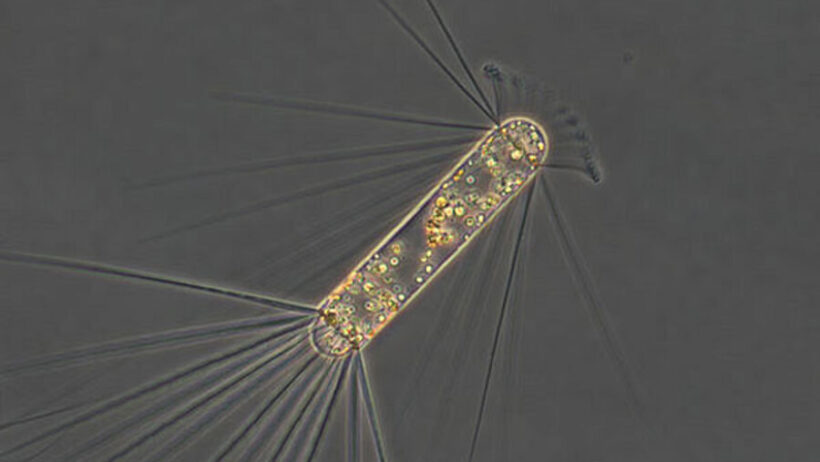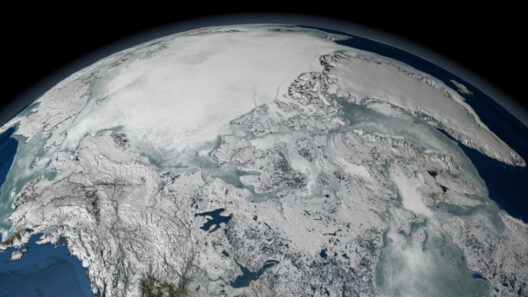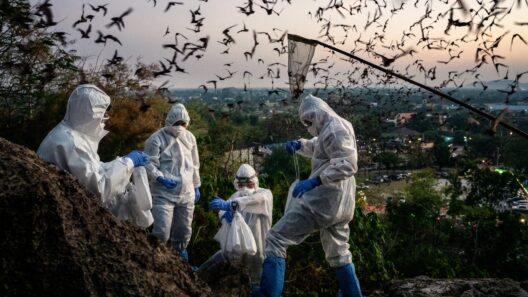In the vast expanse of the blue planet, the oceans hold a powerful secret—a potential antidote to the escalating crisis of climate change. As anthropogenic emissions continue to stoke the fires of global warming, scientists have turned their gaze toward an intriguing hypothesis: Could the deliberate addition of iron to the seas act as a bulwark against this insidious threat? This notion may sound like a strategy plucked from the pages of environmental science fiction, yet it is rooted in nearly three decades of empirical research and oceanographic exploration. In this discourse, we unravel the layers of this complex proposal, exploring the science behind it, its strategic implications, and the potential ramifications for our planet.
The premise begins with the understanding of phytoplankton—microbial powerhouses that thrive in our oceans. These tiny organisms form the cornerstone of marine ecosystems, serving not only as the bedrock of the food web but also as significant players in the global carbon cycle. They collectively perform an astonishing feat: through the process of photosynthesis, they absorb carbon dioxide from the atmosphere, producing oxygen and organic matter. Phytoplankton flourish predominantly in nutrient-rich waters, yet the vast majority of the ocean—a veritable desert of life—is marked by an absence of essential nutrients, particularly iron.
Iron is often the limiting nutrient in oceanic regions far from shore, particularly in the Southern Ocean and portions of the Pacific. Herein lies the crux of the matter: by artificially enriching these waters with iron, we may catalyze blooms of phytoplankton, leading to an exponential increase in carbon sequestration—essentially a biological pump that pulls atmospheric CO2 into the depths of the ocean. Such a strategy acts as a double-edged sword, addressing two critical environmental concerns: mitigating climate change while also enhancing marine ecosystems.
Scientific expeditions have provided a cornucopia of data supporting this hypothesis. The most prominent of these studies occurred in the early 2000s, when research vessels released iron pellets into the Southern Ocean. The response was dramatic; within days, vast swathes of the ocean transformed into vibrant green patches, teeming with flourishing phytoplankton. This phenomenon underscored the potential efficacy of this geoengineering approach. However, the question persists: Does the simple act of dumping iron into the ocean represent a viable solution, or is it a misguided endeavor?
A multifaceted evaluation reveals that while iron fertilization holds promise, it is not without its challenges and controversies. First and foremost, the ecological consequences of large-scale iron addition are not thoroughly understood. Marine ecosystems are archetypal webs of interdependence, and any alteration could ripple through food chains, potentially leading to unintended consequences. For instance, the ensuing expansion of phytoplankton might favor certain species over others, skewing the delicate balance of marine biodiversity.
Moreover, the impact of such fertilization efforts on atmospheric chemistry remains a salient concern. While enhanced phytoplankton growth may sequester substantial amounts of carbon, the subsequent fate of this carbon warrants scrutiny. When phytoplankton die, they sink, potentially becoming food for deeper marine organisms or decomposing at varying depths, each scenario influencing the overall carbon cycle differently. This complexity necessitates rigorous scientific models and long-term monitoring to assess whether the benefits indeed outweigh the perils.
Beyond ecological considerations, there’s an ethical dimension to ponder. If we were to harness iron fertilization as a climate mitigation tool, who would assume responsibility for its oversight? The potential for “geoengineering” initiatives to exacerbate climate inequities is significant. Developed nations may be tempted to implement iron fertilization projects without the consent or involvement of affected coastal communities, thereby imposing solutions that do not align with local ecological knowledge or cultural values.
Furthermore, over-reliance on technological fixes can often detract from addressing the root causes of climate change, such as fossil fuel dependence and destructive agricultural practices. It’s imperative to view iron fertilization not as a panacea but as part of a larger toolkit of climate solutions that also encompasses emissions reductions, reforestation efforts, and sustainable practices.
This realization births a paradigm shift in climate conversations: the approach must be holistic. Recognizing the interplay between human activities and natural systems is essential for developing effective strategies. Consequently, the prospect of iron fertilization must be coupled with a broader commitment to sustainability and environmental stewardship. The oceans, rich in biodiversity and resources, deserve protection as much as they do manipulation.
While the narrative of iron in the oceans unfolds, the call for robust governance and comprehensive research reverberates. Regulatory frameworks must be established to oversee any large-scale intervention, ensuring that all actions taken are transparent, inclusive, and grounded in scientific integrity. The global community must engage in dialogues that elevate marginalized voices, particularly those of indigenous communities who have long understood the rhythms of the natural world.
In the odyssey of combating climate change, iron fertilization serves as a fascinating subplot—one that underscores the promise and peril of human ingenuity. As we chart our course toward a sustainable future, it is crucial to maintain vigilance and temper our zeal for geoengineering with caution and ethical foresight. Only through collaborative efforts, tempered innovation, and respect for natural systems can we hope to navigate the treacherous waters of climate change and secure a thriving planet for generations to come.






